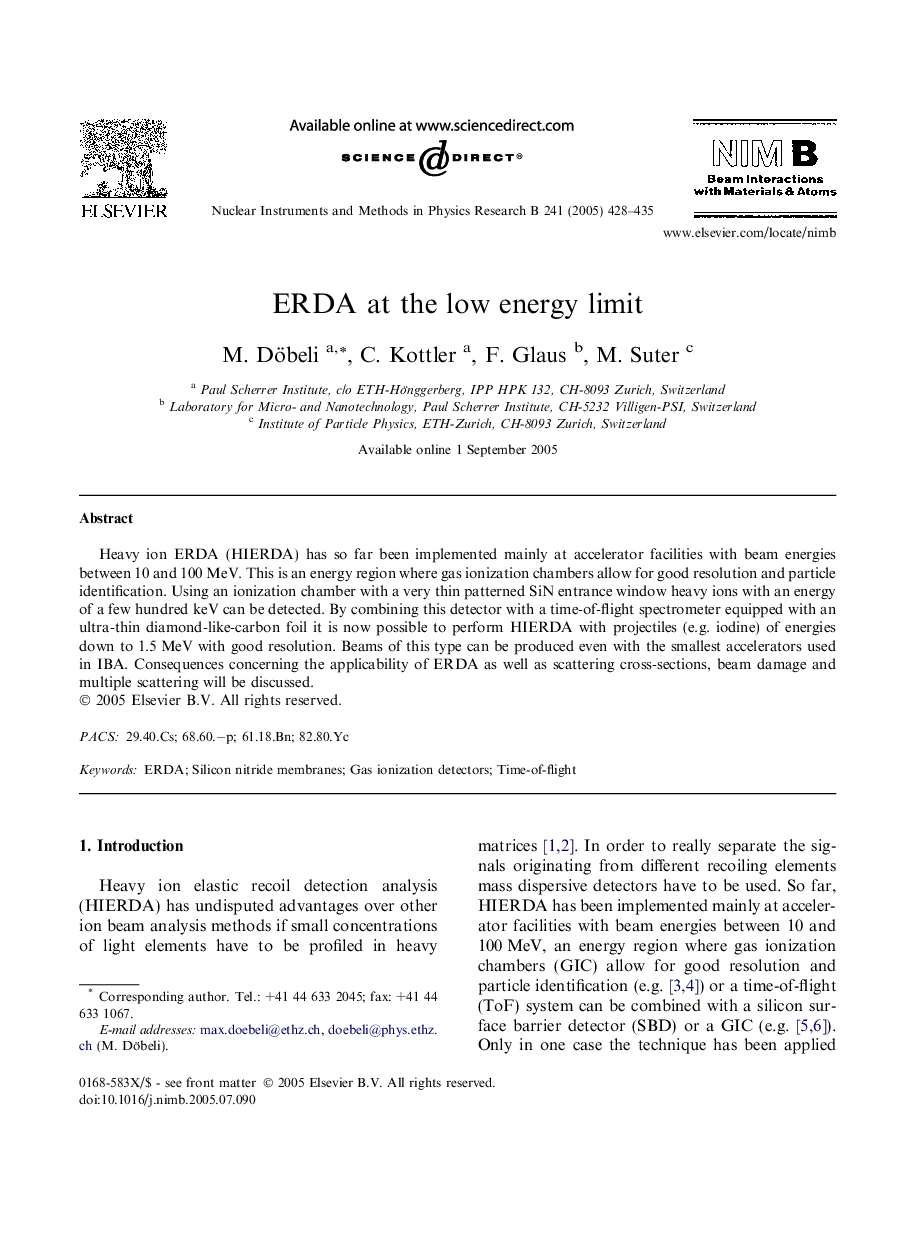| Article ID | Journal | Published Year | Pages | File Type |
|---|---|---|---|---|
| 9817478 | Nuclear Instruments and Methods in Physics Research Section B: Beam Interactions with Materials and Atoms | 2005 | 8 Pages |
Abstract
Heavy ion ERDA (HIERDA) has so far been implemented mainly at accelerator facilities with beam energies between 10 and 100Â MeV. This is an energy region where gas ionization chambers allow for good resolution and particle identification. Using an ionization chamber with a very thin patterned SiN entrance window heavy ions with an energy of a few hundred keV can be detected. By combining this detector with a time-of-flight spectrometer equipped with an ultra-thin diamond-like-carbon foil it is now possible to perform HIERDA with projectiles (e.g. iodine) of energies down to 1.5Â MeV with good resolution. Beams of this type can be produced even with the smallest accelerators used in IBA. Consequences concerning the applicability of ERDA as well as scattering cross-sections, beam damage and multiple scattering will be discussed.
Keywords
Related Topics
Physical Sciences and Engineering
Materials Science
Surfaces, Coatings and Films
Authors
M. Döbeli, C. Kottler, F. Glaus, M. Suter,
